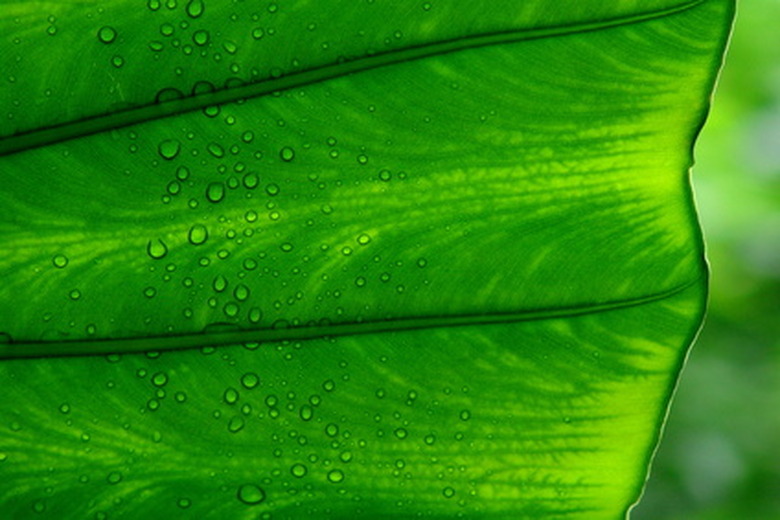How To Grow Musa Basjoo Indoors
Things Needed
- Rocks
- 1-gallon plant pot
- Potting soil
- Tray
- Pebbles
- Spray bottle
- Fertilizer
- Sharp knife
Musa basjoo is the scientific name of the hardy banana plant, which is also called the Japanese fiber banana plant. This banana plant has been cultivated in Japan since the 13th century. Musa basjoo, a tropical plant, is grown indoors as a large herbaceous plant. The big leaves create a lush ornamental feeling indoors. This banana plant produces 3-inch-long inedible fruit filled with black seeds. Musa basjoo is a dramatic plant when grown as a houseplant.
Step 1
Place a 2-inch layer of rocks in the bottom of a 1-gallon, heavy plant pot with good drainage. Place 4 inches of potting soil in the bottom of the plant pot. Remove the Musa basjoo from its container and place in the center of the plant pot. Pack soil in around the banana plant so that it is at the same level that it was in the old container. Pour water in the top of the plant pot until it runs out the bottom.
- Musa basjoo is the scientific name of the hardy banana plant, which is also called the Japanese fiber banana plant.
- Remove the Musa basjoo from its container and place in the center of the plant pot.
Step 2
Fill a 6-inch-deep tray that is larger then the bottom of the container halfway with pebbles. Place the pebble tray under the container. Pour enough water in the tray so that the pebbles are nearly covered. This tray will increase the humidity and protect the area under the container from watering spills.
Step 3
Place the container in an area with bright light. The Musa basjoo plant produces smaller leaves when inside than when grown outside in the full sunlight. Keep the banana plant in a room with temperatures above 50 degrees Fahrenheit. This houseplant needs lots of room to grow since it can reach 12 to 18 feet tall.
- Fill a 6-inch-deep tray that is larger then the bottom of the container halfway with pebbles.
Step 4
Water the Musa basjoo whenever the soil starts to feel dry on the surface. Keep the soil moist, but not waterlogged. Spray the leaves with water each week. This keeps the leaves dust-free and increases the humidity around the plant.
Step 5
Feed the banana plant with half-strength 10-10-10 fertilizer every two to four weeks during the summer. Cut the feeding schedule to every four to six weeks in the winter.
Step 6
Prune the Musa basjoo back to the soil level in the winter with a sharp knife. The roots will push out new, vigorous growth in the spring. Repot and divide the rhizomes if needed before the new spring growth starts.
- Water the Musa basjoo whenever the soil starts to feel dry on the surface.
- Feed the banana plant with half-strength 10-10-10 fertilizer every two to four weeks during the summer.
Tip
Musa basjoo is a rhizomatous banana plant. The stem underground forms rhizomes. Multiple trunks appear as the banana’s rhizome creates offshoots. A 6-year-old Musa basjoo plant may have 12 stems and reach 6 feet across.
